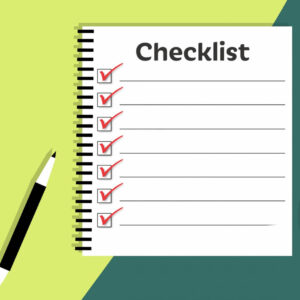
Choices, choices. Whether you’re running an e-commerce platform, a blog, or a corporate website, the process of adding new content is a critical aspect of keeping your online presence relevant and effective. However, in the rush to populate websites with fresh material, many overlook the significance of a strategic and systematic approach to content planning. Without a well-thought-out strategy, adding content can become a haphazard endeavor that fails to meet its intended goals.
In this article, we will delve into the essential planning principles for adding new content to your website. Understand your audience and define your goals. Craft high-quality content and optimize it for search engines. These are the key steps that can help you not only maintain an up-to-date website but also ensure that each new piece of content contributes meaningfully to your online success.
What We'll Cover
Back to Basics
Even if you already have a wealth of valuable content, it’s essential to stay focused on your objectives for your web presence. When we refer to “web content” here, we’re talking about your knowledge base, periodicals, media, and other posts that subtly communicate your brand’s essence without overtly promoting your value proposition.
Regularly publishing content is key to driving organic traffic to your site. The more comprehensive and relevant your content is within your area of expertise, the higher the likelihood that individuals seeking solutions will discover your platform.
If your organization hosts events, make sure to highlight them! Discuss the pressing issues your organization is tackling and share how you’re contributing to positive change. Additionally, offering insights and links to third-party resources can position you as a trusted curator, encouraging visitors to return to your site for valuable information.
Planning Principles
Getting into the details, once you (re)establish the purpose of your content, the next step is to figure out how to regularly engage your visitors in a meaningful and constructive way.
Keyword Research
Start by conducting thorough keyword research to identify relevant, high-traffic search terms related to your business. Integrating these keywords naturally into your website’s content will enhance your SEO efforts and improve your site’s visibility.
Advanced Tips: Beyond basic keyword research, consider the intent behind each keyword. Are users looking for information, a product, or a solution to a problem? Use long-tail keywords and questions that address these specific intents. Additionally, keep an eye on trending keywords in your industry, as they can provide timely content opportunities. Regularly update your keyword list to stay aligned with evolving search trends.
Content Pillars and Clusters
Structure your content around well-planned pillars (foundational pieces) and clusters (related subtopics). This approach not only creates a cohesive and user-friendly experience but also boosts your SEO by allowing search engines to better understand the thematic relevance of your content.
Advanced Tips: When planning your content pillars, think about creating evergreen content that remains valuable over time, ensuring consistent traffic. For clusters, focus on depth rather than breadth; thoroughly covering each subtopic will establish your site as an authority in that niche. Use internal linking strategies to connect cluster content back to your pillars, enhancing navigation and improving SEO performance.
Content Calendar
Develop a content calendar to ensure a steady stream of fresh, valuable insights for your audience. A well-maintained calendar helps keep your content strategy organized and ensures you’re consistently meeting your audience’s needs.
Advanced Tips: When creating your content calendar, consider incorporating seasonal trends, holidays, and industry events to make your content more relevant. Use a mix of content formats (blogs, videos, infographics) to keep your audience engaged. Also, build in flexibility so you can quickly adapt to unexpected opportunities or industry changes. Regularly review and adjust your calendar based on content performance analytics.
Call-to-Action Optimization
Optimize your calls-to-action (CTAs) by placing clear, compelling prompts throughout your content. These should guide visitors toward specific actions that align with your goals, whether it’s signing up for a newsletter, downloading a resource, or making a purchase.
Advanced Tips: To maximize the effectiveness of your CTAs, experiment with A/B testing to determine which designs, text, and placements yield the best results. If you don’t have the traffic to get actionable insights, try user testing with your CTAs. Ensure that everything is contextually relevant to the surrounding content, creating a natural flow that leads users to take action. Additionally, consider using personalized CTAs based on user behavior, which can significantly increase conversion rates.
Storytelling through Content
Weave storytelling into your content strategy to humanize your brand and build an emotional connection with your audience. Storytelling helps make your brand relatable and memorable, fostering deeper engagement with your visitors.
Advanced Tips: When crafting stories, focus on authenticity and relatability. Share real-life examples, customer success stories, or behind-the-scenes insights to build trust with your audience. Incorporate visual elements, such as images or videos, to enhance the storytelling experience. Additionally, consider the hero’s journey framework to structure your stories, which can resonate deeply with readers and leave a lasting impact.
Before you start
Before diving into the strategies outlined above, you should have a clear understanding of several key elements:
1. Audience Awareness:
- Target Audience: Understand who your audience is, including their demographics, preferences, pain points, and what they seek from your content. This will help tailor your messaging to resonate with them.
- User Intent: Recognize the different intents users might have when they search for content, such as seeking information, making a purchase, or looking for inspiration. This will inform how you structure your content and the type of keywords you choose.
2. Brand Identity:
- Voice and Tone: Be clear about your brand’s voice and tone. Whether it’s professional, casual, authoritative, or friendly, consistency in voice is crucial for building brand recognition and trust.
- Core Values: Ensure that your content reflects your brand’s core values and mission. This alignment will help establish credibility and a stronger connection with your audience.
3. Content Goals:
- Objectives: Define the specific goals of your content. Are you looking to increase traffic, generate leads, boost conversions, or build brand awareness? Your goals will shape the type of content you create and how you measure its success.
- Measurement Metrics: Understand how you’ll measure the success of your content, whether it’s through web analytics, conversion rates, engagement metrics, or another key performance indicator (KPI).
4. SEO Fundamentals:
- Basic SEO Knowledge: Familiarize yourself with the basics of search engine optimization, including how search engines work, the importance of keywords, and the role of meta tags, links, and content structure.
- Competitive Landscape: Analyze what your competitors are doing well in terms of content and SEO. This will help you identify opportunities and gaps that you can exploit.
5. Content Management:
- Content Formats: Be aware of the different content formats (blog posts, videos, infographics, case studies, etc.) and how they can be used to achieve different objectives.
- Content Distribution: Understand the various channels through which your content can be distributed (social media, email newsletters, partnerships, etc.) to reach a broader audience.
6. Commitment to Consistency:
- Consistency: Realize the importance of consistency in content production and posting. An inconsistent content schedule can harm audience engagement and SEO performance.
- Adaptability: Be prepared to adapt your content strategy based on audience feedback, changing trends, and the performance of your content.
Followup
Be sure to leverage your analytics tools to evaluate your content’s effectiveness in growing your website as a revenue-generating asset. Give your content time to propagate to search engines, for newsletters to be opened, and for discovery on social media.
At the end of the day, while SEO is the focus of content planning and feedback, it’s important to note that it is just one way visitors can find your site. If your site is linked to your socials, professional listings, even business cards, you have multiple avenues that make up your marketing funnel. Ensure your content is suitable for everyone in your target audience, regardless how they found you. Over time, you’ll find your messaging improve in consistency, and this will help you build upon it for future engagement.





